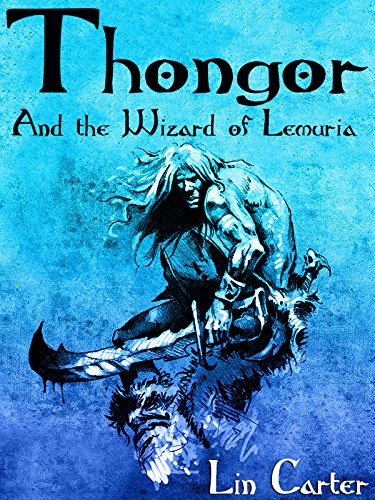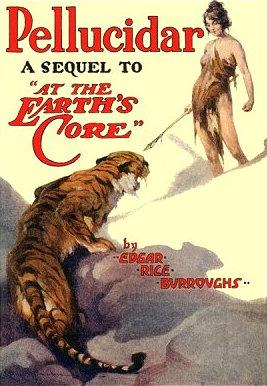Losing Control of the Narrative (original) (raw)

Thongor and the Wizard of Lemuria, by Lin Carter – I believe this was Carter’s first published book, a sword-and-sorcery tale about another barbarian warrior in the same vein as Conan, whom he’d also go on to write. Set in the lost land of Lemuria, which also appeared in Robert E. Howard’s works, it takes place during the Ice Age.
The country was traditionally ruled by reptilian people descended from dinosaurs, and while they’ve been overthrown and driven out, they’re trying to make a new foothold. Thongor, whose name sounds like a joke about underwear (and might be, for all I know), teams up with the wizard Sharajsha, who wants a fighter to help him stop the reptilians from performing a ceremony to summon their demon god. It moves at a frantic pace, with one thing happening after another and few breaks in between. It’s pretty cool that Thongor and Sharajsha have access to an airship, which they steal from a king the barbarian had been serving. it’s a fun, quick read, but nothing really new, even back in the sixties.

Pellucidar, by Edgar Rice Burroughs – The second book in the series about a land inside the Earth continues David Innes’ attempt to civilize the place, and to thwart the schemes of his enemy Hooja the Sly One. He uses tools and weapons from the surface world to fight off the ruling Mahars and rescue his old companions. He’s accompanied by a Hyaenodon, and finds allies in a tribe of people with features of both gorillas and sheep, led by a chief named Gr-gr-gr. There follows a naval battle against Hooja’s forces. It is kind of frustrating that it starts out with pretty much everything Innes had accomplished in the previous book undone, then more or less restarted at the end.

Indexing, by Seanan McGuire – Originally released as a serial on Kindle, this book is about a secret organization that tracks attempts of fairy tales to intrude in the world. These tales happen many times in various ways, and the Bureau organizes them by the Aarne-Thompson Index originally developed in 1910. The narrator, Henrietta Marchen (her last name referencing the German word for fairy tales) is a Snow White who works alongside a shoemaking elf who has feelings for her, a Pied Piper, and a reformed wicked stepsister who has a nasty attitude and unorthodox approaches. I found the latter, Sloane, to be the most interesting character overall. The main idea is that narratives try to take over reality, generally in harmful ways, and the Bureau has to prevent these from happening. Being a serial, it’s very episodic, each of the first few parts focusing on a particular tale that’s trying to assert itself. Later, it has more of an overarching story, and introduces the idea of a rogue agent without the Bureau who turns out to be Mother Goose. I was a little unclear on how literal the fantastic aspects were supposed to be; there’s a talking frog at one point, but most of the characters are just normal people who are possessed by the narratives. I appreciate that the Bureau makes some distinctions between traditional tales and more recent ones by specific authors, although they do deal with both.

The Life and Opinions of Tristram Shandy, Gentleman, by Laurence Sterne – This rather strange book was originally released in nine parts in the 1760s. It’s a novel ostensibly about the life of its titular character, but there isn’t really much plot, as Tristram is prone to going off on tangents constantly, presenting events out of order, sometimes even omitting chapters. It’s basically a long cock-and-bull story, as the book freely admits at the end. Tristram, his father, his uncle, and the doctor who delivered him, called Dr. Slop, all share their thoughts in a haphazard fashion. It’s difficult to tell what’s going on, but probably not entirely necessary. I don’t think the style of the humor really holds up, or at least it didn’t for me personally, but I appreciate the idea and how absurd the writing can be.